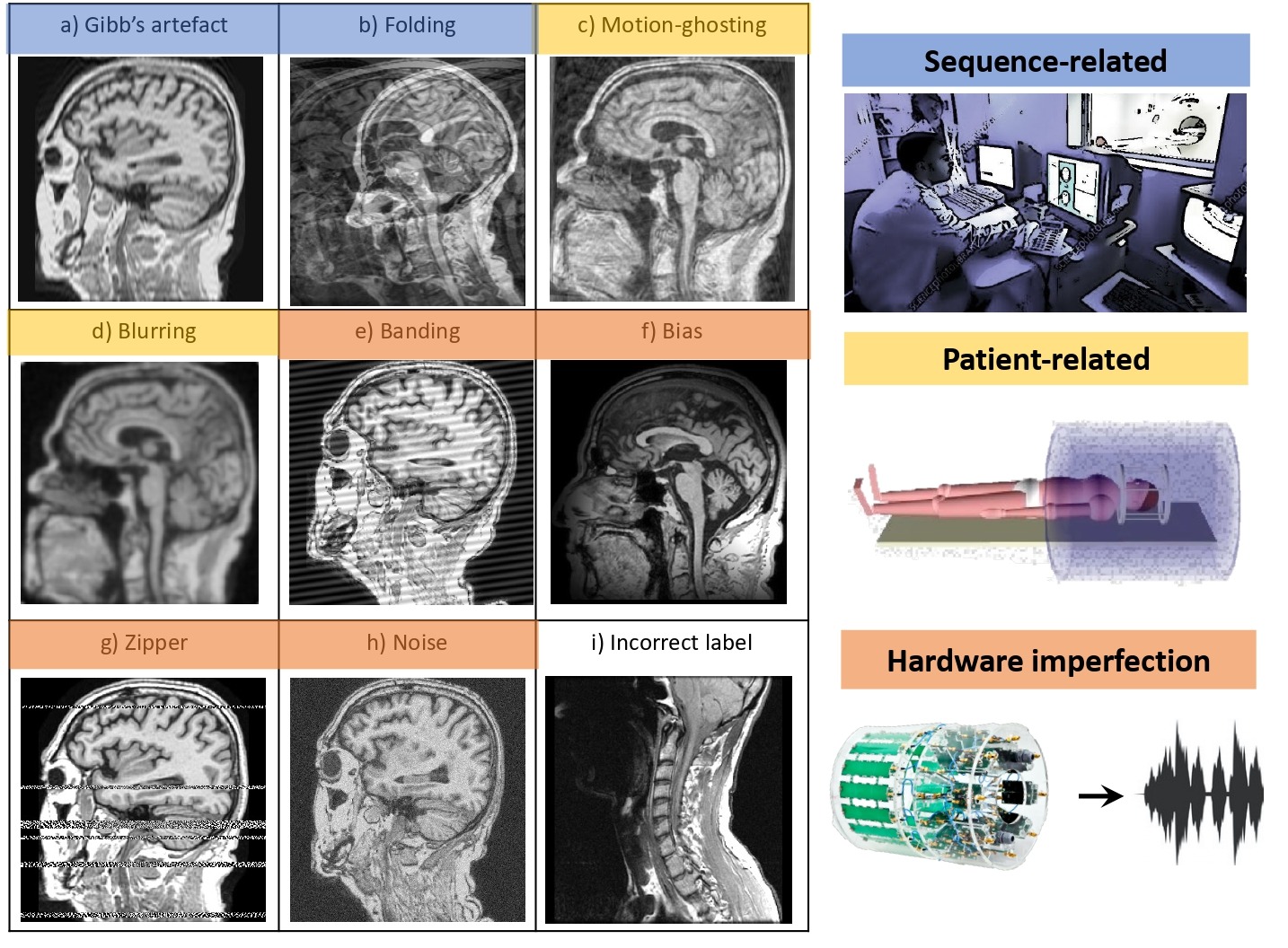Large medical imaging datasets are becoming standard, but a crucial challenge remains: ensuring that every MRI scan is of sufficient quality, without artifacts that could compromise subsequent analyses or the diagnostic pathway.
Motivations & Objectives
- Automate MRI image quality control, reducing manual work and subjective bias.
- Overcome the scarcity of real artifact data through synthetic data augmentation, enabled by MRI physics-based simulators.
- Provide fast, efficient, and reliable tools to support high-throughput clinical pipelines.
Methods
- Artifact generators inspired by the physics of magnetic resonance imaging (MRI) to simulate errors, distortions, and noise on brain images.
- Extraction of abstract and engineered features, able to compactly describe images and facilitate artifact classification.
- Automatic feature selection specific to each type of artifact, achieving maximum discriminative power for multisite/multiscanner detection.
- Robust SVM classifiers, trained on selected features, to automatically identify nine types of MRI artifacts.
Novelty & Contributions
- Physical artifact generators to greatly expand datasets, making manual collection of rare cases less essential.
- Definition and validation of a large pool of features for the detection of nine classes of artifacts in structural MRI.
- Feature selection module specific for artifact—“class by class” optimization.
Results & Validation
- Performance evaluated on mixed databases (synthetic artifacts and clinical trial on multiple sclerosis with expert labels): up to +12.5 percentage points increase in accuracy, F1, F2, precision, and recall compared to conventional methods.
- Computationally light pipeline: <1 second per scan, ideal for real-time implementation in clinical departments and large biobanks.
Related Scientific Articles
-
An efficient semi-supervised quality control system trained using physics-based MRI-artefact generators and adversarial training
(arXiv preprint arXiv:2206.03359, 2022)
PubMed
Authors: Daniele Ravi, Frederik Barkhof, Daniel C. Alexander, Lemuel Puglisi, Geoffrey JM Parker, Arman Eshaghi (for ADNI)
Code Repository
-
Automatic Quality Control (artifact generator, SVM, feature selection):
daniravi/automatic-quality-control
Main components:src/qcs/artefacts/(artifact generators),src/qcs/feature_extraction.py(features),src/qcs/feature_selection.py
Team & Authors
- Daniele Ravì (PI, artifact simulator and SVM pipeline development)
- Lemuel Puglisi (Feature engineering, QSA code contributions)
- Frederik Barkhof, Daniel C. Alexander, Geoffrey JM Parker, Arman Eshaghi

